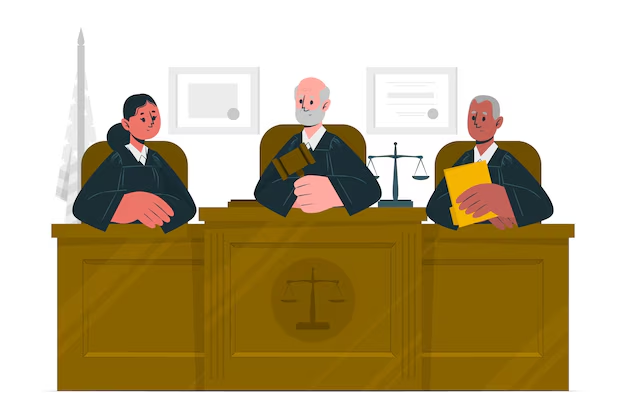Introduction
The cornerstone of any judicial system is the pursuit of truth. In this pursuit, the testimony of witnesses plays an indispensable role, particularly in civil cases, where the burden of proof lies heavily on the parties involved. Witnesses form the backbone of civil adjudication, lending credibility and context to documentary evidence and the pleadings presented by litigants. With the introduction of the Bharatiya Sakshya Adhiniyam, 2023 (hereinafter referred to as BSA 2023), India has taken a bold step in reforming its laws related to evidence, including the treatment and role of witnesses in civil litigation.
BSA 2023, which replaces the archaic Indian Evidence Act, 1872, is aimed at streamlining the rules of evidence in tune with technological advancements, global best practices, and the needs of a fast-evolving legal ecosystem. This article comprehensively examines the provisions of BSA 2023 relating to witnesses in civil proceedings, evaluating its legal framework, practical implications, and offering comparative perspectives and future directions.
Historical Background and Legal Context
The Indian Evidence Act of 1872, framed during British colonial rule, laid the foundation for evidence law in India. Drafted by Sir James Fitzjames Stephen, it was a forward-looking legislation for its time, integrating the principles of relevancy, admissibility, and the reliability of witness testimony. For over a century and a half, the Indian judiciary functioned within this framework, even as the world around it evolved significantly.
Civil litigation has traditionally relied heavily on oral and documentary evidence, with witnesses playing a crucial role in establishing facts in issues like breach of contract, property rights, matrimonial disputes, tort claims, and succession matters. Over the years, challenges like perjury, hostile witnesses, and delayed cross-examinations plagued the efficacy of witness testimonies.
Recognizing these concerns, and the need to modernize India’s evidentiary laws, the Indian Parliament enacted BSA 2023, as part of a larger effort to revamp criminal and civil procedure laws, including the Bharatiya Nyaya Sanhita, 2023 and Bharatiya Nagarik Suraksha Sanhita, 2023. Though applicable to both civil and criminal proceedings, BSA 2023’s impact on civil litigation is particularly noteworthy due to the central role played by witnesses.
Relevant Laws and Regulations
-
The BSA 2023 contains several provisions that directly or indirectly govern the role, rights, duties, and procedures related to witnesses in civil cases:
a) Definition and Scope
-
Section 3(1)(c): Defines “evidence” to include oral testimony of witnesses, underlining that oral statements of persons permitted to testify about matters under inquiry are to be treated as evidence.
b) Admissibility and Nature of Oral Evidence
-
Sections 59 and 60: Maintain that oral evidence must be direct and relate to the fact perceived by the witness. Hearsay remains inadmissible except in certain recognized exceptions.
c) Examination of Witnesses
-
Sections 137 to 139: Set out the three stages of witness testimony – examination-in-chief, cross-examination, and re-examination. The law allows the opposing party to challenge the credibility and veracity of the witness, and the court to intervene for clarification.
d) Court’s Powers
-
Section 150: Empowers the judge to put questions to witnesses to discover relevant facts, cutting through procedural technicalities to arrive at the truth.
e) Privileges and Protections
-
Section 126: Privileges communications between legal advisers and clients, ensuring that witnesses cannot be compelled to disclose privileged communication in court.
f) Digital Evidence and Remote Testimony
-
Schedule and Procedures: BSA 2023 acknowledges and incorporates electronic records and digital testimony. Witnesses may now testify via audio-video linkage, a feature particularly important in civil trials involving cross-border parties or those unable to appear physically.
-
Key Judicial Precedents
Though BSA 2023 is a recent enactment, many judicial principles from prior rulings continue to hold value. Notable among them are:
-
State of U.P. v. Ramesh Prasad Misra (1996): Clarified the significance of truthful, consistent witness testimony in civil adjudication.
-
Bipin Shantilal Panchal v. State of Gujarat (2001): Emphasized on avoiding frequent interruptions during witness testimony, allowing smoother cross-examinations.
-
Selvi v. State of Karnataka (2010): Reiterated the importance of consent and protection of witness rights under Article 20(3) of the Constitution.
These principles continue to influence judicial discretion under BSA 2023.
Legal Interpretation and Analysis
The new law emphasizes the quality over quantity of witnesses. It encourages courts to rely on fewer, but credible witnesses, reducing procedural delays. The recognition of digital and electronic evidence has expanded the definition of a “witness” to include those giving affidavits or testimony via video conferencing, a significant shift from traditional practice.
Moreover, the law empowers courts to control vexatious or harassing cross-examinations, especially in sensitive civil matters like matrimonial disputes, inheritance issues, and property rights. The protection of witnesses from intimidation, particularly in high-profile civil cases, is implicit in the scheme of BSA 2023.
Comparative Legal Perspectives
Internationally, many jurisdictions have embraced progressive laws concerning witnesses:
-
United Kingdom: The Civil Evidence Act, 1995, introduced hearsay exceptions and allowed written witness statements to replace oral depositions in many civil trials.
-
United States: The Federal Rules of Evidence govern witness testimony with an emphasis on credibility, character evidence, and cross-examination protections.
-
Australia: The Uniform Evidence Law simplifies civil witness testimony, especially in electronic format.
India’s BSA 2023, while rooted in domestic needs, reflects many of these global best practices, particularly in embracing digital means of recording and presenting witness evidence.
Practical Implications and Challenges
Despite progressive reforms, practical challenges persist:
-
Witness Hostility: Civil witnesses often turn hostile due to familial or business pressures, undermining justice.
-
Infrastructure for Remote Examination: While BSA 2023 allows remote testimony, court infrastructure across India remains uneven.
-
Training and Awareness: Lawyers and judges must be sensitized to interpret and apply the new provisions effectively.
-
False Testimonies and Perjury: BSA 2023 retains penalties, but enforcement remains weak.
Hence, while the framework is reformed, implementation will determine the true success of these provisions.
Recent Developments and Trends
Several recent trends signal positive momentum:
-
Live Recording of Testimonies: Some High Courts are encouraging video recording of witness depositions to prevent manipulation.
-
Witness Protection Schemes: Though primarily seen in criminal cases, their adaptation in civil contexts, especially for whistleblowers or vulnerable litigants, is being discussed.
-
AI in Cross-Examination Analysis: Pilot projects are exploring how AI can assess consistency in witness statements across hearings.
The judiciary’s pro-active role in adapting to BSA 2023 provisions is evident, though uniform nationwide adoption remains a work in progress.
Recommendations and Future Outlook
To strengthen the role of witnesses under BSA 2023 in civil cases:
-
Judicial Training: Regular training on evidentiary reforms and witness handling under BSA 2023.
-
Infrastructure Upgrade: Equip civil courts with video conferencing tools and digital storage for e-evidence.
-
Witness Support Units: Provide counseling, logistics, and protection to vulnerable witnesses.
-
Public Legal Literacy: Awareness campaigns to educate litigants on their rights and duties as witnesses.
-
Stringent Perjury Prosecutions: To deter false testimony and uphold the sanctity of oath.
With these measures, the vision of BSA 2023 as a modern, efficient evidence law can be fully realized.
Conclusion and References
The Bharatiya Sakshya Adhiniyam, 2023 represents a transformative shift in India’s legal landscape, particularly in the realm of civil litigation. By redefining the role of witnesses, embracing technology, and enhancing judicial discretion, it promises a more robust and dynamic evidentiary system.
Yet, its success hinges on proactive implementation, judicial sensitivity, and infrastructural support. Witnesses are not just narrators of facts; they are essential stakeholders in the justice delivery system. Upholding their dignity, protecting their interests, and ensuring the integrity of their testimony must be the guiding principle under BSA 2023.
References:
-
Bharatiya Sakshya Adhiniyam, 2023 – Bare Act.
-
State of U.P. v. Ramesh Prasad Misra, (1996) SCC 640.
-
Bipin Shantilal Panchal v. State of Gujarat, AIR 2001 SC 1158.
-
Selvi v. State of Karnataka, AIR 2010 SC 1974.
-
Civil Evidence Act, 1995 (UK).
-
Federal Rules of Evidence (USA).
-
National Judicial Academy, India – Training Materials on BSA 2023.
Also Read:
Rights of undertrial prisoners in India
How To Send A Legal Notice In India













